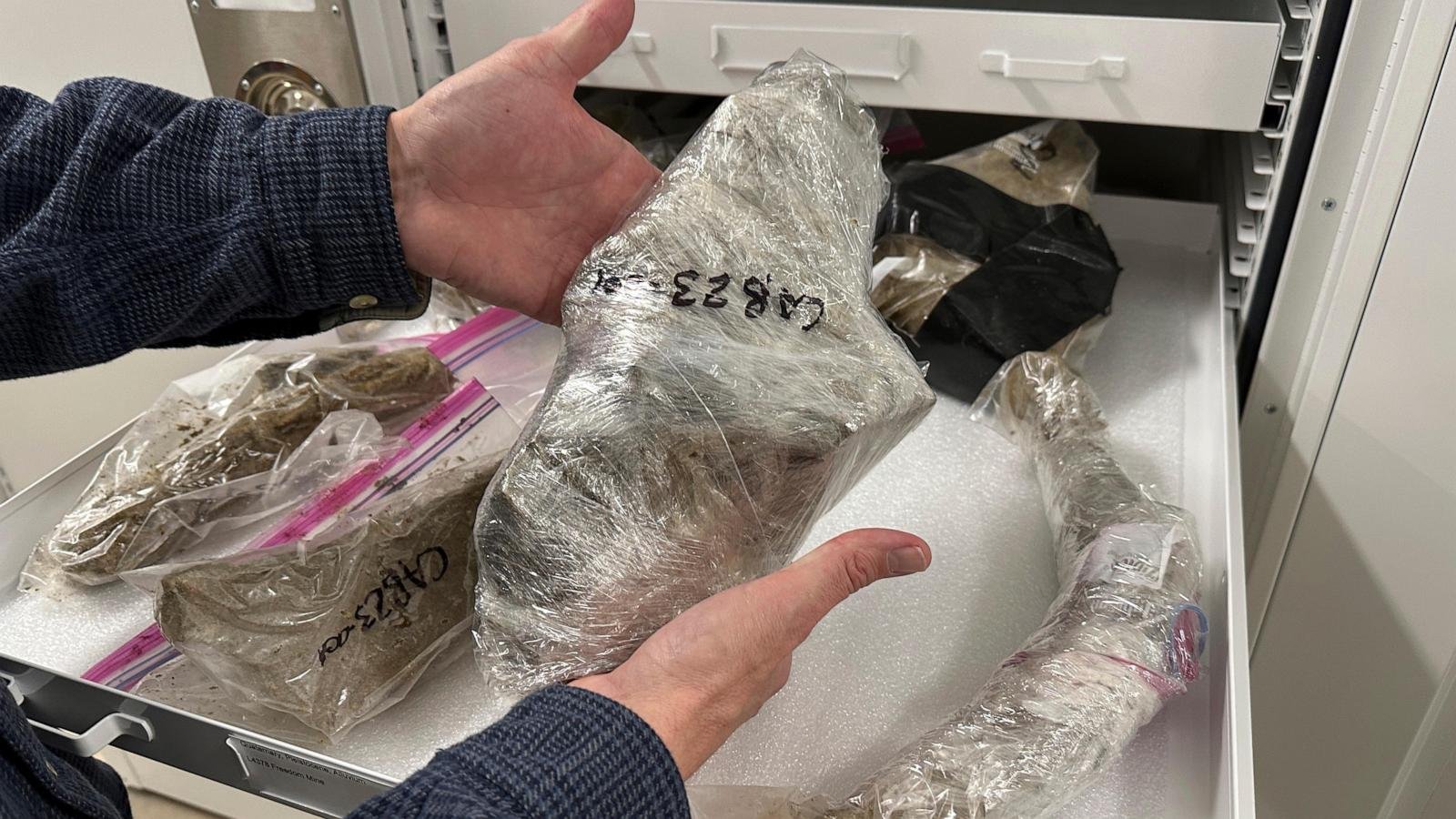Several months ago, coal miners in North Dakota unearthed a remarkable archaeological find – a 7-foot-long mammoth tusk that had been buried for thousands of years. State officials anticipate that this significant discovery will soon be on public display, allowing people to witness this extraordinary piece of history.
The mammoth tusk was discovered in May at the Freedom Mine near Beulah, situated about 80 miles northwest of Bismarck. Recognizing the importance of the find, workers promptly cordoned off the mine, which is owned by North American Coal, and enlisted the expertise of paleontologists to evaluate the discovery.
Over the course of the next 12 days, a team led by paleontologists from the North Dakota Geological Survey meticulously excavated the old streambed where the fossils were buried. During this process, they uncovered more than 20 bones from the mammoth skeleton. Experts now assert that this find represents one of the most complete mammoth skeletons ever discovered in the state.
Clint Boyd, a senior paleontologist for the North Dakota Geological Survey, expressed the significance of the find, stating, “Most of the mammoth fossils known from North Dakota are isolated bones and teeth. (It’s) an exciting and scientifically important discovery.”
The paleontologists not only retrieved a massive tusk but also collected ribs, a shoulder blade, a tooth, and parts of the hips. Taking great care, the specimens were wrapped in protective plastic and transported to the paleontology lab at the North Dakota Heritage Center & State Museum in Bismarck.
At the lab, staff embarked on the meticulous process of cleaning off sediment and stabilizing the delicate bones. The mammoth tusk, excavated from a depth of 40 feet, was estimated to be between 10,000 to 100,000 years old. The preservation of such fossils provides invaluable insights into the prehistoric past, allowing researchers to study and learn more about the environment and the creatures that inhabited it.
Simultaneously, staff from the geologic survey and the mine collaborated to integrate the fossils into an educational outreach program. Plans are underway to put the mammoth tusk and bones on public display, providing an opportunity for people to engage with this remarkable piece of natural history.
The prehistoric mammoth, larger than today’s elephants and covered in thick wool, once roamed North America during the Ice Age. Mammoths coexisted with other iconic animals like saber-toothed tigers and giant sloths during the Pleistocene Epoch, which ended about 10,000 years ago. Woolly mammoths, a specific species of mammoth, were prevalent in what is now North Dakota.
While the mammoth tusk and bones have been recovered from the mine, paleontologists are still working to identify the specific species of mammoth to which they belong. This ongoing research contributes to a deeper understanding of the ancient ecosystems and the diverse megafauna that once inhabited the region.
In summary, the discovery of the mammoth tusk and bones in North Dakota stands as a testament to the state’s rich paleontological heritage. The meticulous excavation and preservation efforts by experts ensure that this extraordinary find will not only contribute to scientific knowledge but will also be shared with the public, allowing people to connect with the ancient past and marvel at the wonders of the natural world.
